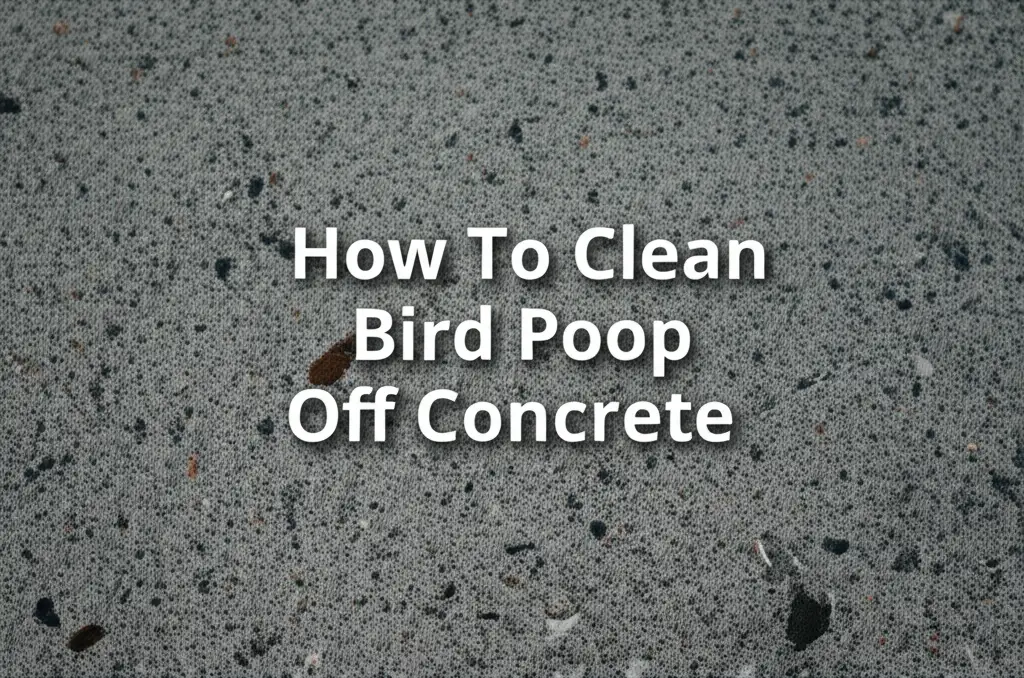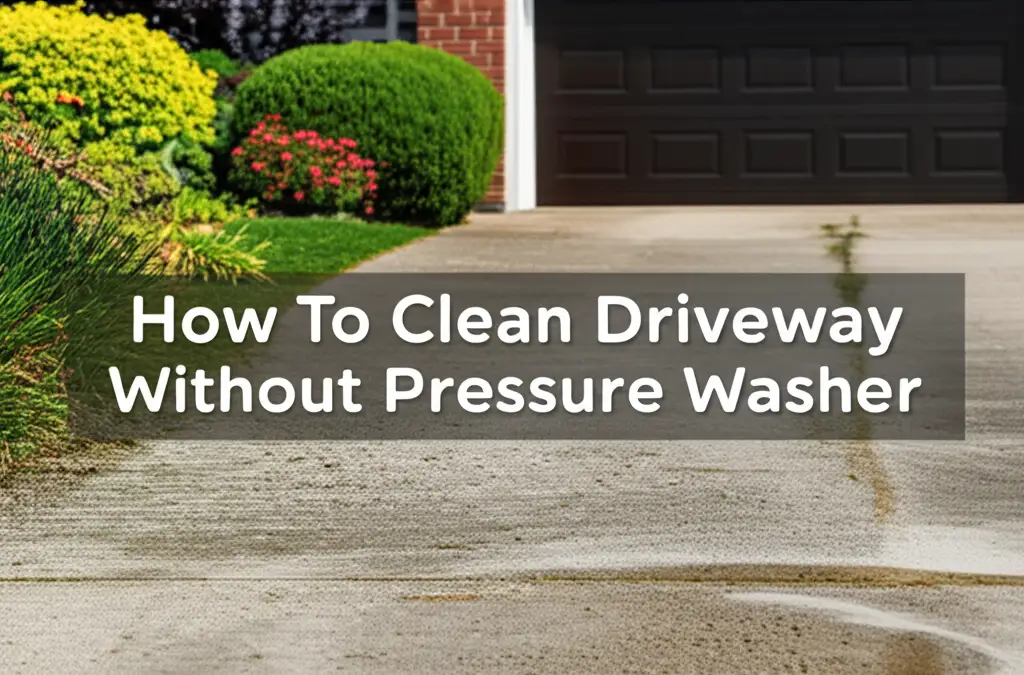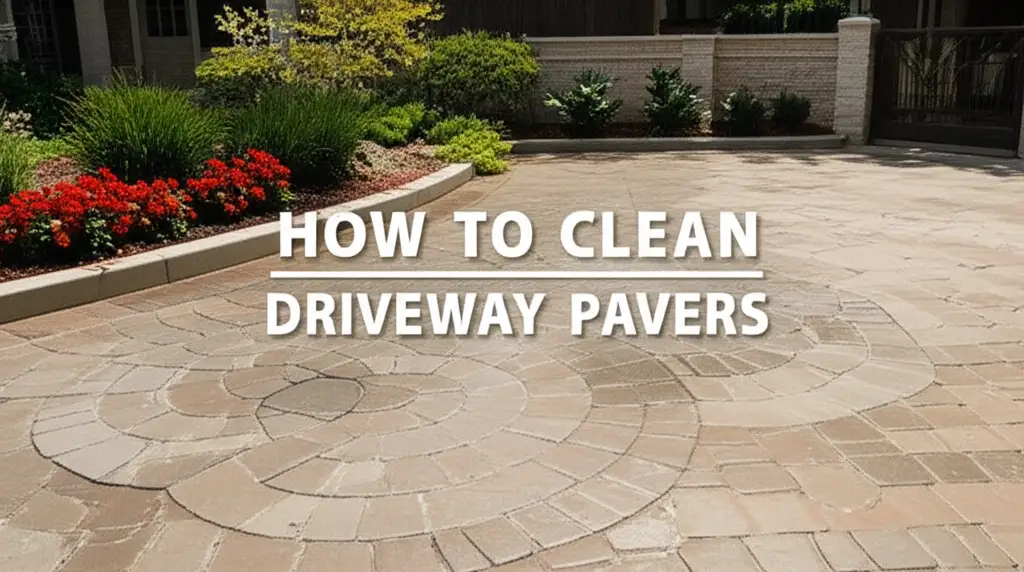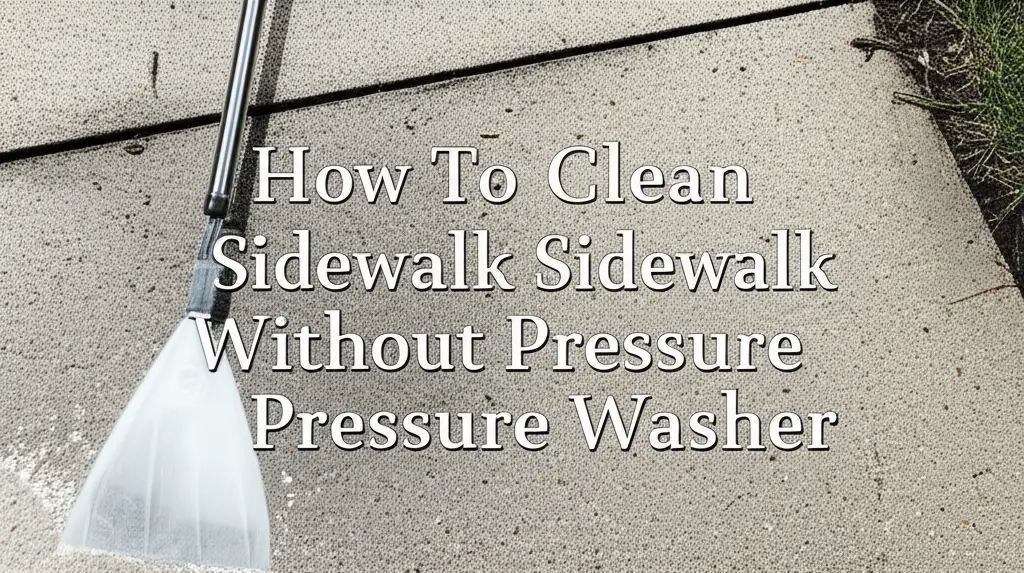· Outdoor Cleaning · 18 min read
How To Clean Stains From Concrete
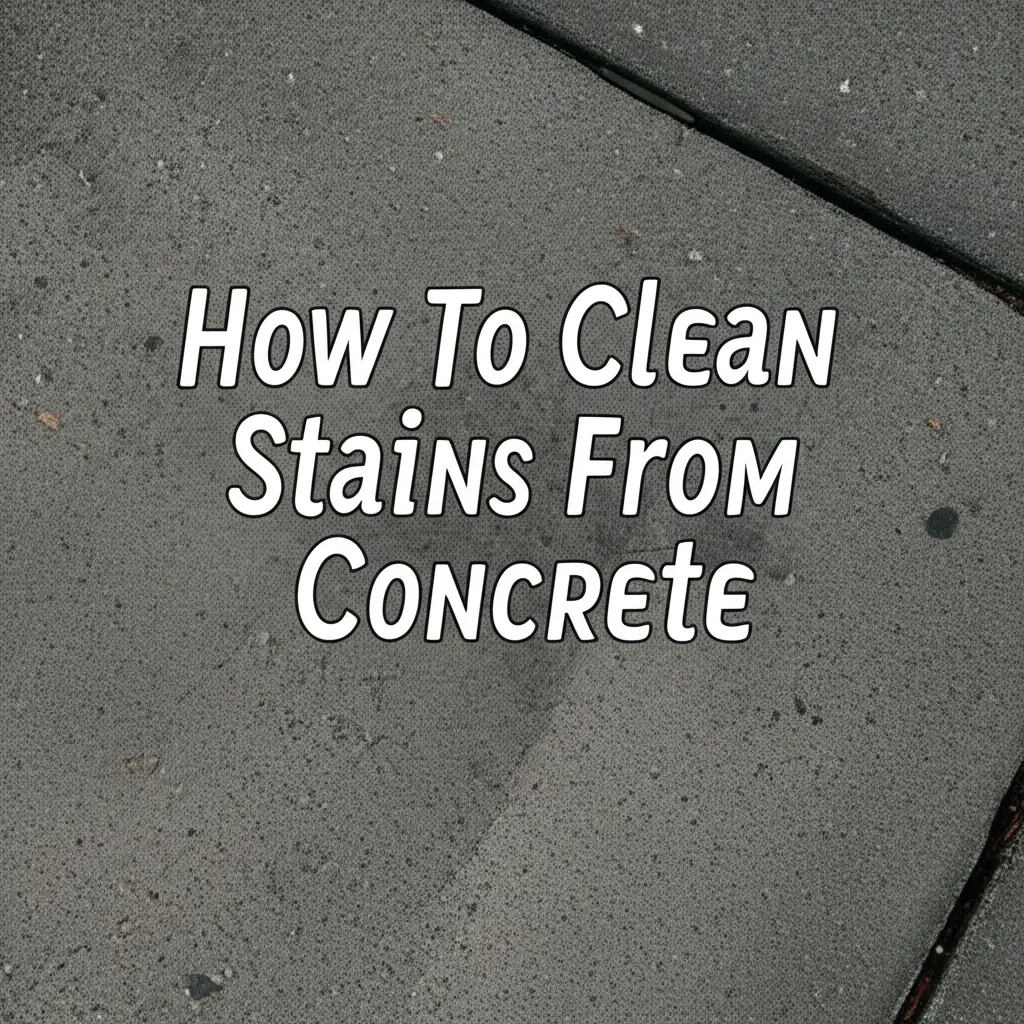
Effectively Clean Stains From Concrete Surfaces
Is your concrete driveway or patio looking less than perfect? Stains on concrete can spoil its appearance. Oil, grease, rust, and grime leave unsightly marks. Knowing how to clean stains from concrete helps restore its look. This guide provides clear steps and effective methods to remove many common concrete stains.
Cleaning concrete stains can seem like a big job. But with the right tools and techniques, it becomes much simpler. We will discuss different stain types and the best ways to tackle each one. You will learn about safe cleaning solutions and practical steps. Get ready to bring your concrete surfaces back to life.
Takeaway
- Identify the stain type before cleaning.
- Gather the correct tools and cleaning agents.
- Always test cleaners in a small, hidden area first.
- Use specialized methods for tough stains like oil, rust, or mold.
- Consider sealing concrete to prevent future staining.
How do you effectively clean stains from concrete?
To effectively clean stains from concrete, first identify the stain type. Then, choose the appropriate cleaning agent, like degreasers for oil or rust removers for rust. Apply the cleaner, let it dwell, scrub the area, and rinse thoroughly. For tough stains, repeated applications or stronger methods may be necessary.
Understanding Common Concrete Stains and Their Challenges
Concrete is a durable material, but it is also porous. This means it can absorb spills and dirt deeply. Various factors cause stains on concrete surfaces. Knowing what caused the stain helps you choose the right cleaning method. Different stains need different approaches for effective removal.
Stains might come from vehicles, plants, or household spills. Oil and grease are common in driveways and garages. Rust stains appear from metal objects left on the surface. Algae and mold thrive in damp, shaded areas. Each stain type presents its own challenge.
For example, oil stains penetrate deep into the concrete. You need strong degreasers to lift them. Rust stains often require acidic solutions. Mold and mildew respond well to bleach or specialized cleaners. Understanding the stain helps you avoid wasting time and effort. It also prevents damage to your concrete.
Many people face the frustration of stubborn concrete blemishes. But I have found that a systematic approach works best. First, determine the stain’s origin. Then, gather the proper cleaning agents and tools. This focused effort leads to better results.
Essential Tools and Cleaning Solutions for Concrete Stain Removal
Before you start scrubbing, gather your supplies. Having the right tools makes the job easier and more efficient. Simple household items often work well for many stains. For tougher marks, you might need stronger, specialized cleaners. Safety gear is also very important.
You will need a stiff-bristle brush, a bucket, and a hose for rinsing. A pressure washer can be very helpful for large areas or deep stains. For cleaning solutions, consider white vinegar, baking soda, and dish soap for light stains. These are safe and often effective. For tougher challenges, you might need a dedicated concrete degreaser. A rust remover, or even a diluted bleach solution for organic growth, can also be useful. Always read the product labels before use.
Always protect yourself during cleaning. Wear gloves, safety glasses, and long sleeves. Some chemicals can irritate skin or eyes. Proper ventilation is also key if working indoors or in enclosed spaces like a garage. When I clean my own concrete, I make sure I have all my gear ready before I begin. This prepares me for a safe and effective cleaning session.
Basic Cleaning Tools:
- Stiff-bristle brush or broom
- Bucket
- Garden hose with nozzle
- Pressure washer (optional, for tough stains)
- Clean cloths or rags
Common Cleaning Agents:
- Dish soap (for mild grease)
- White vinegar (for general stains, rust)
- Baking soda (for absorbing fresh spills, light scrubbing)
- Bleach (diluted, for mold/mildew, use with caution)
- Commercial concrete degreaser
- Rust remover specifically for concrete
Tackling Common Concrete Stains Effectively
Different concrete stains require specific removal techniques. Understanding the nature of the stain guides your choice of cleaner and method. What works for oil will not work for rust. Let’s break down how to handle the most frequent culprits. Applying the correct method saves time and yields better results.
Removing Oil and Grease Stains
Oil and grease stains are common on driveways and garage floors. These stains penetrate concrete quickly. Fresh spills are easier to clean than old ones. Act fast for the best chance of complete removal.
First, absorb any fresh oil with cat litter or baking soda. Let it sit for several hours, then sweep it up. For older stains, use a commercial degreaser or a strong detergent. Apply the degreaser directly to the stain. Allow it to sit and penetrate for the recommended time. Scrub the area vigorously with a stiff brush. Rinse thoroughly with hot water or a pressure washer. You may need to repeat this process for stubborn oil stains. For more specific guidance on engine oil, see how to clean engine oil off concrete. If you also deal with gas spills, learn how to clean gas off concrete effectively. Many find specific products like poultices helpful for deep stains.
Eliminating Rust Stains
Rust stains often come from metal furniture, tools, or fertilizer pellets. They leave an orange or reddish-brown mark. These stains bond tightly with concrete. Standard cleaners often fail to remove them completely.
For rust, an oxalic acid-based cleaner works well. You can find these at hardware stores. Apply the rust remover to the stain as directed on the package. Let it sit for the recommended time. Do not let it dry on the concrete. Scrub the stain with a stiff brush. Rinse the area thoroughly with water. Repeat if the stain persists. Be careful with rust removers; they can be harsh. For light rust, a paste of lemon juice and salt might also work.
Cleaning Mold, Mildew, and Algae
Green or black growth on concrete indicates mold, mildew, or algae. These thrive in damp, shaded areas. They are not just unsightly but can also make surfaces slippery. They pose a slip hazard, especially on patios or pool decks.
A simple solution of bleach and water is often effective. Mix one part bleach with two parts water. Apply the solution to the affected area. Let it sit for 15-20 minutes, allowing it to kill the growth. Scrub the surface with a brush. Rinse thoroughly with clean water. For large areas or persistent growth, a pressure washer can provide better cleaning. Remember to protect nearby plants from bleach runoff. If you are cleaning a pool deck, you might find more specific tips at how to clean concrete pool deck.
Removing Paint Stains
Paint spills can be tricky, depending on the type of paint and how long it has been there. Fresh paint is much easier to remove than dried paint. Dried paint often needs stronger methods.
For wet paint, immediately blot it up with a cloth. Then, scrub the area with soap and water. For dried latex paint, try scraping off as much as you can with a putty knife. Use a wire brush or a commercial paint stripper for stubborn spots. Apply the stripper according to the product instructions. Always test a small, hidden area first. Rinse the area thoroughly after treatment. For detailed advice, you can consult how to clean paint off concrete. If you have wood stain spills, a specific guide is available at how to clean wood stain off concrete.
Tackling Tire Marks and Battery Acid
Tire marks are common in garages and driveways. They result from hot tires on concrete. Battery acid stains, while less common, are very corrosive. They can etch concrete quickly.
For tire marks, use a stiff brush and a degreaser. Apply the degreaser generously. Let it sit, then scrub hard. A pressure washer often helps lift these dark marks. You can also try using a paste of baking soda and water. For battery acid, immediate action is key. Neutralize the acid with baking soda or kitty litter. Pour a thick layer over the spill. Let it absorb the acid. Then, sweep it up. Rinse the area thoroughly with water. If etching has already occurred, the damage might be permanent. For more specific details on battery acid, check how to clean battery acid off concrete. Also, there’s a guide on how to clean tire marks off concrete.
Specialized Cleaning Methods for Stubborn Stains
Some concrete stains just won’t budge with basic cleaning. These tough stains might require more advanced techniques. Using specialized methods can help lift deep-seated marks. Always proceed with caution when using stronger cleaners or tools. Proper safety gear is crucial for these tasks.
Using Poultices for Deep Stains
Poultices are absorbent materials mixed with a chemical cleaner. They are excellent for drawing deep stains out of porous concrete. This method works well for oil, grease, or even some types of rust. The poultice paste slowly pulls the stain upwards.
To make a poultice, mix an absorbent material (like cat litter, diatomaceous earth, or baking soda) with a solvent. The solvent should match the stain type. For oil, use acetone or mineral spirits. For rust, use a rust remover. Mix them to form a thick paste. Apply a thick layer, about a quarter to a half-inch thick, over the stain. Cover the poultice with plastic wrap and tape down the edges. Let it sit for 12-24 hours. The solvent evaporates, drawing the stain into the absorbent material. Once dry, scrape up the poultice and rinse the area. You might need to repeat this process for very old or deep stains.
Power Washing for Large Areas
A pressure washer can be a powerful tool for cleaning concrete. It uses high-pressure water to blast away dirt, grime, and some stains. This method is great for large areas like driveways or patios. It also works well for general cleaning.
Before using a pressure washer, sweep away loose debris. Choose the right nozzle and pressure setting for your concrete. Start with a wider fan nozzle and lower pressure. Always keep the nozzle moving. Do not hold it in one spot, as this can etch or damage the concrete. Work in small sections, overlapping your strokes. A pressure washer can remove surface dirt and some types of embedded stains. For very tough stains, pre-treating with a cleaner might still be necessary. Using a pressure washer can help you achieve a clean finish on your garage floor. For garage floor specific cleaning, refer to how to clean garage concrete floor.
Chemical Cleaners, Including Muriatic Acid
For the most stubborn stains, strong chemical cleaners might be needed. Muriatic acid is a potent option, but it requires extreme caution. It can effectively remove tough rust, efflorescence, and mineral deposits. However, it is highly corrosive.
Before using muriatic acid, always wear full protective gear. This includes gloves, eye protection, a respirator, and long clothing. Dilute the acid significantly with water; usually, one part acid to ten parts water. ALWAYS add acid to water, never water to acid. Apply the diluted solution to a small test area first. Apply it evenly to the stain. Let it sit for only a few minutes. Then, scrub and rinse thoroughly with plenty of water. You might need to neutralize the area with a baking soda solution afterward. Muriatic acid can etch concrete if left too long or used improperly. It is a last resort option for very tough stains. For more on using this specific cleaner, see how to clean concrete with muriatic acid. If you encounter concrete glue, there is also a guide for how to clean carpet glue off concrete.
Preventing Future Concrete Stains and Maintenance
Cleaning stains from concrete is one step. Preventing them from happening again is just as important. A proactive approach saves you effort in the long run. Regular maintenance keeps your concrete looking its best. Think of it as a small investment for a lasting clean.
Sealing Concrete for Protection
Sealing your concrete is one of the best ways to prevent stains. A concrete sealer creates a protective barrier on the surface. This barrier makes the concrete less porous. It helps repel water, oil, and other staining agents. Spills sit on the surface instead of soaking in.
There are different types of concrete sealers, including penetrating and topical. Penetrating sealers soak into the concrete pores. Topical sealers form a protective film on the surface. Choose a sealer suitable for your concrete’s location and exposure. Apply the sealer after the concrete is thoroughly clean and dry. Follow the manufacturer’s instructions for application. Re-apply sealer every few years for ongoing protection. This simple step can dramatically reduce future cleaning efforts.
Regular Cleaning Routine
Establishing a regular cleaning routine helps prevent stain buildup. Small spills and dirt are easier to clean when fresh. Don’t wait for stains to become deeply embedded. A simple sweep and wash can go a long way.
Sweep your concrete surfaces regularly to remove loose dirt and debris. This prevents organic matter from decaying and staining the surface. Periodically wash the concrete with plain water and a mild detergent. Use a stiff brush to scrub any light marks. Rinse thoroughly afterward. This routine keeps your concrete looking fresh. It also makes deep cleaning less frequent. I find that quick clean-ups prevent bigger jobs later.
Immediate Spill Cleanup
The quickest way to prevent a stain is to clean spills immediately. Concrete is absorbent, so liquids sink in fast. The faster you act, the better your chances of full removal. Keep absorbent materials handy, especially in areas prone to spills.
If oil, grease, or any colored liquid spills, blot it up immediately. Use paper towels, rags, or absorbent materials like cat litter. Do not wipe or spread the spill. After blotting, apply a mild detergent or appropriate cleaner. Scrub the area. Rinse thoroughly. This immediate action greatly reduces the risk of a permanent stain. Taking immediate action can save you a lot of effort later.
Safety First: Protecting Yourself and Your Concrete
When cleaning concrete stains, safety must be your top priority. Many cleaning agents are chemicals that can harm you. They can also damage your concrete if not used correctly. Always take precautions before you start any cleaning project. Protecting yourself and your property ensures a positive outcome.
Personal Protective Equipment (PPE)
Always wear appropriate personal protective equipment. This is essential when working with strong cleaners or power tools. Your eyes, skin, and lungs need protection. Failure to wear PPE can lead to injuries or health issues.
- Eye Protection: Safety glasses or goggles shield your eyes from splashes and debris.
- Gloves: Chemical-resistant gloves protect your hands from harsh chemicals.
- Long Clothing: Wear long pants and long-sleeved shirts to protect your skin.
- Respirator: If using strong fumes or working in an enclosed area, a respirator protects your lungs.
- Closed-Toe Shoes: Protect your feet from spills and falling objects.
Always read the safety instructions on cleaning product labels. Different chemicals require specific types of protection. I always put on my gloves and safety glasses first, no matter how small the cleaning task.
Protecting Nearby Areas
Cleaning concrete can affect surrounding plants, grass, or other surfaces. Chemical runoff can harm landscaping. Overspray from pressure washers can damage paint or delicate materials. Take steps to protect these areas.
Before cleaning, cover nearby plants with plastic sheeting or tarps. You can also wet down plants with plain water. This dilutes any chemical runoff. If cleaning near painted walls or wooden fences, protect them too. Use drop cloths or plastic sheets. After cleaning, rinse surrounding areas thoroughly with clean water. This helps dilute any lingering chemicals. Always be mindful of where your cleaning solutions and rinse water go.
Testing Cleaning Solutions
Never apply a new cleaning solution directly to a large, stained area without testing it first. Different concrete types and finishes react differently to cleaners. An improper cleaner can cause discoloration or etching. A test area prevents costly mistakes.
Choose an inconspicuous spot on your concrete. This could be a corner or an area hidden by a bush. Apply a small amount of the cleaning solution. Let it sit for the recommended time. Then, rinse it off. Observe the area for any adverse reactions, such as discoloration, etching, or damage. If the test area looks good, proceed with cleaning the main stain. If not, try a different solution or method. This simple step can save your concrete’s appearance.
Maintaining Clean Concrete Surfaces
Once you have cleaned your concrete, maintaining its pristine condition is key. Regular care extends the life of your cleaning efforts. It prevents new stains from becoming deeply set. A little maintenance goes a long way in preserving your concrete’s appearance and durability.
Routine Sweeping and Rinsing
The easiest and most effective maintenance step is routine sweeping. Loose dirt, leaves, and other debris can break down and cause stains over time. Sweeping regularly prevents this buildup. Use a stiff broom to clear away all loose material from your concrete surfaces.
After sweeping, a quick rinse with a garden hose can remove fine dust and surface grime. This simple step stops dirt from being ground into the concrete. It also washes away any potential staining agents before they have a chance to penetrate. Doing this once a week or as needed keeps your concrete looking fresh. I make this a regular part of my outdoor cleaning routine. It keeps my concrete looking its best without much effort.
Addressing Spills Immediately
Immediate action on spills is your best defense against new stains. Concrete is porous, so liquids soak in fast. The longer a spill sits, the harder the stain will be to remove. Have absorbent materials readily available in areas where spills are likely, like driveways or workshops.
If oil, paint, or any other staining liquid spills, blot it up right away. Use paper towels, rags, or an absorbent material like cat litter. Avoid wiping, as this can spread the stain. Once the excess liquid is removed, clean the spot with a mild detergent and water. Scrub gently, then rinse thoroughly. Prompt action can often prevent a stain from forming at all. This practice saves a lot of cleaning effort later.
Reapplying Sealers Periodically
Concrete sealers provide a protective barrier against stains and moisture. However, sealers wear down over time due to weather, traffic, and cleaning. Reapplying the sealer periodically is essential for ongoing protection. The frequency depends on the type of sealer and how much wear the concrete experiences.
Check your concrete’s sealer effectiveness. Pour a small amount of water on the surface. If the water beads up, the sealer is still working. If it soaks into the concrete, it is time to reapply. Typically, sealers need reapplication every 2-5 years. Always clean the concrete thoroughly before applying a new coat of sealer. Follow the manufacturer’s instructions for the best results. This ensures your concrete remains protected and easy to clean.
FAQ Section
How do you get old, stubborn stains out of concrete?
To remove old, stubborn concrete stains, first identify the stain type. Use a specialized cleaner like a concrete degreaser for oil or a rust remover for rust. Apply the cleaner and let it dwell for the recommended time. Scrub vigorously with a stiff brush. For very deep stains, consider using a poultice or a pressure washer. You may need to repeat the process multiple times.
What is the best homemade concrete stain remover?
A good homemade concrete stain remover often depends on the stain. For general dirt and light grease, mix dish soap with warm water. For mold or mildew, a solution of one part bleach to two parts water works well. For light oil or general grime, sprinkle baking soda and spray with vinegar to create a fizzy reaction, then scrub.
Can pressure washing damage concrete?
Yes, pressure washing can damage concrete if used improperly. Too much pressure, holding the nozzle too close, or using a very narrow spray pattern can etch or pit the surface. Always start with a lower pressure setting and a wider fan tip. Keep the nozzle moving to avoid concentrating the force in one spot.
How often should I clean my concrete?
The frequency of concrete cleaning depends on its exposure and use. For highly trafficked or exposed areas like driveways, clean annually or semi-annually. Patios might need cleaning once a year. General maintenance like sweeping and immediate spill cleanup should be done more often, ideally weekly or as needed, to prevent stain buildup.
Is it possible to remove rust stains from concrete completely?
Removing rust stains completely from concrete can be challenging, especially if they are old and deep. Oxalic acid-based rust removers are often the most effective. Multiple applications might be needed. For very stubborn stains, a poultice method can help draw out deeper rust. Sometimes, faint discoloration may remain, but significant improvement is usually achievable.
Conclusion
Cleaning stains from concrete is a task many homeowners face. With the right knowledge and tools, you can restore your concrete’s appearance. We have covered various stain types, from common oil and grease to tough rust and mold. Remember to identify the stain first. Then, select the most suitable cleaning method. Always prioritize safety during your cleaning efforts.
Protecting your concrete surfaces goes beyond just cleaning. Regular maintenance and proper sealing are key to preventing future stains. By following these steps, you keep your concrete looking good for years. A clean concrete area enhances your home’s curb appeal. Start your concrete cleaning project today and enjoy a pristine outdoor space.
- concrete cleaning
- stain removal
- driveway cleaning
- patio cleaning

